Transitioning to full-time travel requires adjustment, so be kind to yourself. When you set off, you’ll likely experience a heightened sense of energy, thrilled that your dream is finally a reality. This enthusiasm will enable you to adapt to the travel fatigue and help you push through some of the bumps you experience in the first few days.
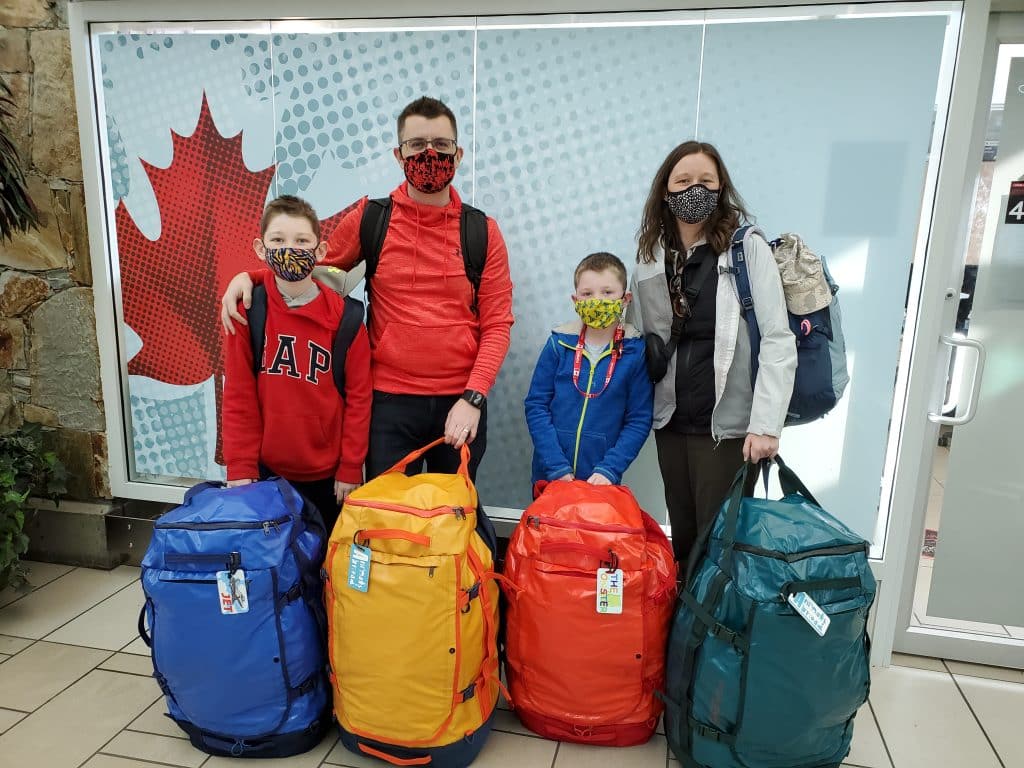
Thirty days into our trip, we had made some incredible memories, and at the same time, experienced some challenges that left us wondering whether we had made a huge mistake. If you find doubts creeping in, don’t give up. This phase will pass. Remember, there is a lot of change in the first month, especially for kids. Tough days will come and go, but the memories you create as a family will last a lifetime.
Read on for tips on transitioning to life on the road.
Vacation versus Extended Travel
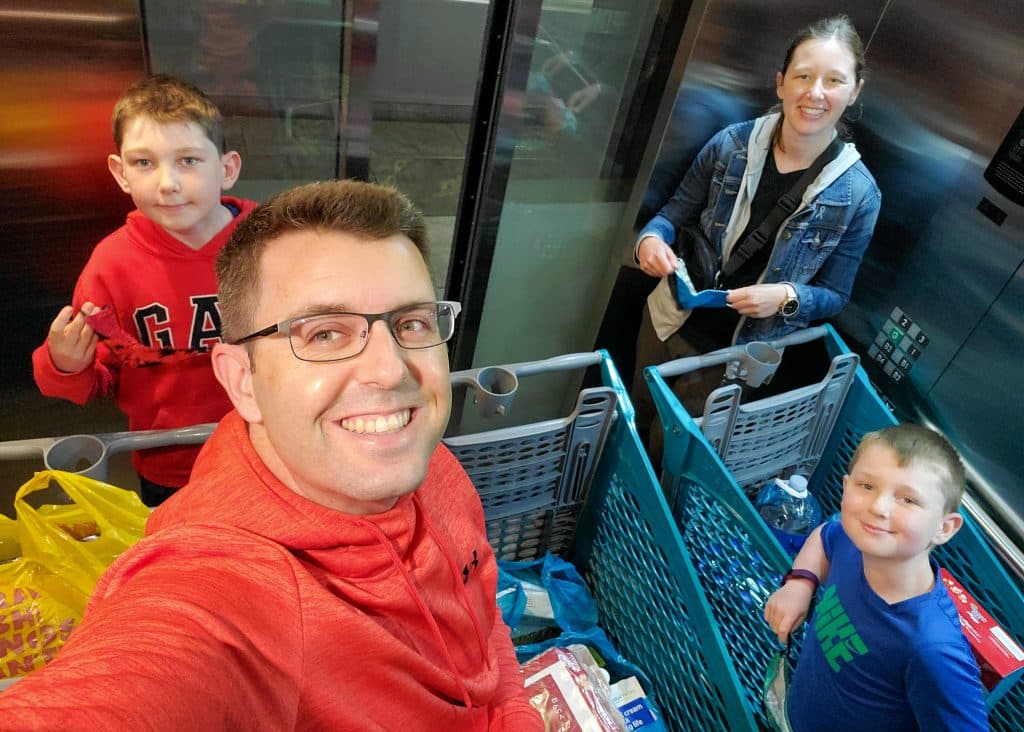
Travelling is unlike a vacation, where you can leave your worries behind, forget work, and unwind. When you’re travelling for an extended period, there are amazing adventures and relaxing days at the beach, but ultimately, you are living abroad. Daily activities like work, school, laundry, and grocery shopping are still intermixed with new experiences.
Changing your mindset from “vacation” to living abroad, before you leave, will prepare you for the realities because, unless you have an unlimited budget, you will not be eating out every night and checking out every tourist attraction available.
It took some time for our boys to adjust and understand that there were days when we simply ran errands and did chores, and others when we hung out at home or found a local park to play soccer. After a while, though, we embraced these “normal” days because they gave us a sense of home.
Homeschooling Abroad
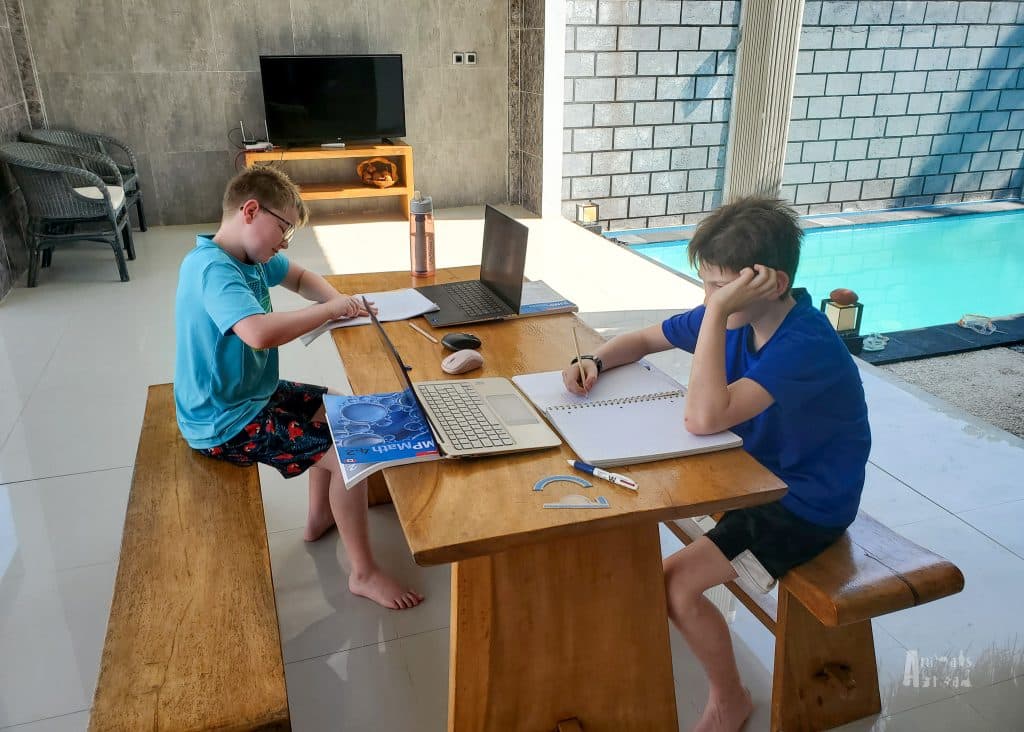
All the while adjusting to living abroad, if you are travelling with kids, you will have to figure out how to integrate homeschooling into your lives. This was new to us, too. It’s easy to get caught up in the adventure, and before you know it, your kids haven’t picked up a book in days. Here are a few tips that can help you get started:
• Be intentional and carve out time in your schedule for schoolwork. Our first month consisted of a jam-packed road trip in Morocco. Each time we moved cities was a travel day – packing bags, driving long hours, finding a new place to stay, and visiting the local market for groceries. Then, the non-travel days were full of sightseeing and exploring. It didn’t leave a lot of time for school. Going forward, we added some designated school time to our itinerary.
• On travel days, have kids do their schoolwork in transit. This worked well for us when we were on a train, boat, or plane, but our youngest would get car sick if he read in a moving car, so we had to get creative on road trips.
• A little goes a long way. At home, your kids are used to going to school six hours a day, but you don’t need that much time on the road. Homeschooling allows for focused one-on-one instruction so that you can cover a lot of information in a short time. We had the boys complete a daily journal and 30 minutes of reading each day. Then, adding one to two hours a few times a week for other subjects like math was enough to keep them on top of their work.
• Break it up. Do some schooling in the morning or afternoon, then explore the rest of the day, rather than trying to do a full day of school.
• Incorporate their learning into your activities. You could have your child:
-Calculate the currency exchange on a trip to the market.
-Research the local culture or an indigenous group in the area.
-Compare and contrast the different ecosystems found in the country.
-Look up interesting facts about an excursion you visit, for example, the Colosseum in Italy or about camels, before going on a camel trek.
For more ideas and resources for homeschooling, visit the Kids’ Corner Home page.
Handling Homesickness
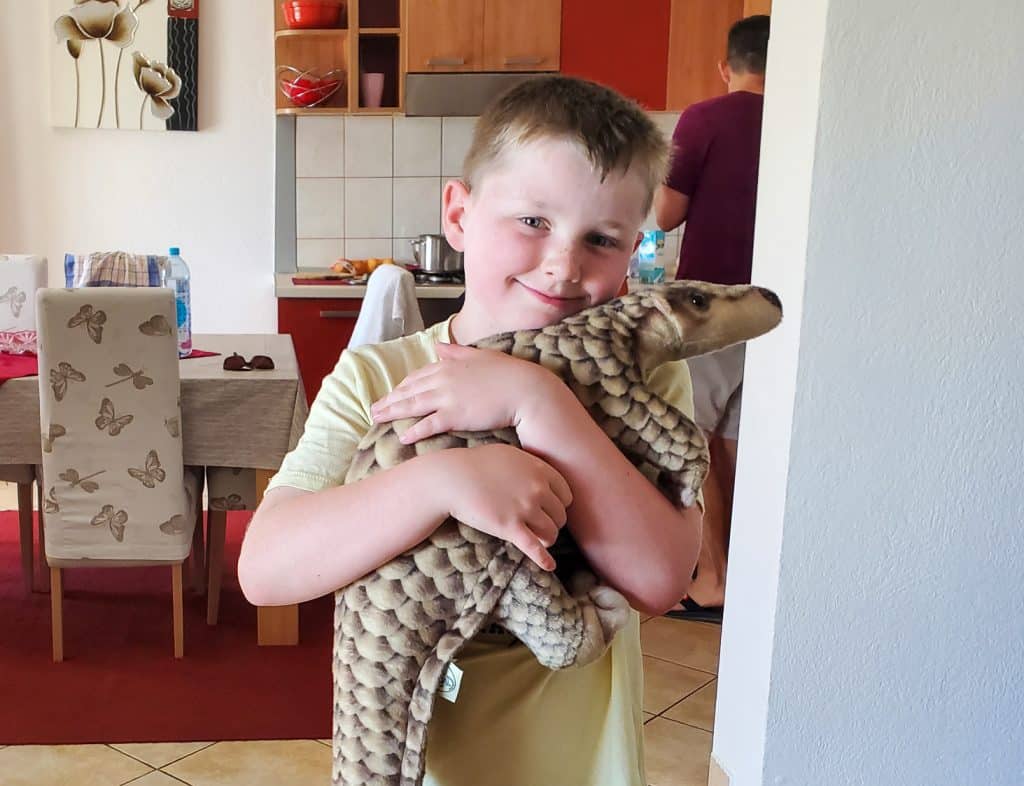
It’s common to feel homesick when travelling abroad. It often comes and goes, but thanks to technology, staying connected to loved ones back home is easier. Here are some ideas that worked for us:
• Bring a special item from home: Have your child choose a special item like a toy, a stuffed animal, or a picture that will remind them of home. I made a small blanket for our youngest with pictures of our dog so he could cuddle while away.
• Involve Friends: Create memories with friends to take with you. Design a photo book with pictures of friends and family that your child can enjoy, or have your child make friendship bracelets for themselves and their friends. They can look at their bracelet while away and be reminded of home.
• Plan online playdates: Set up a time when your child can call a friend and play a game. Pokémon card games, Yahtzee, and other board games are fun, as are electronic games like online chess and some video games that allow players to play together online.
• Set up a video chat with their school class: Help your child create a photo presentation of the places they’ve visited and have them share their experiences with their classmates.
• Send postcards home: Allow your child to pick out postcards wherever you visit and write home to friends and family. Bonus – they won’t even notice that they are working on their writing skills while doing it.
Adapting to New Cultures
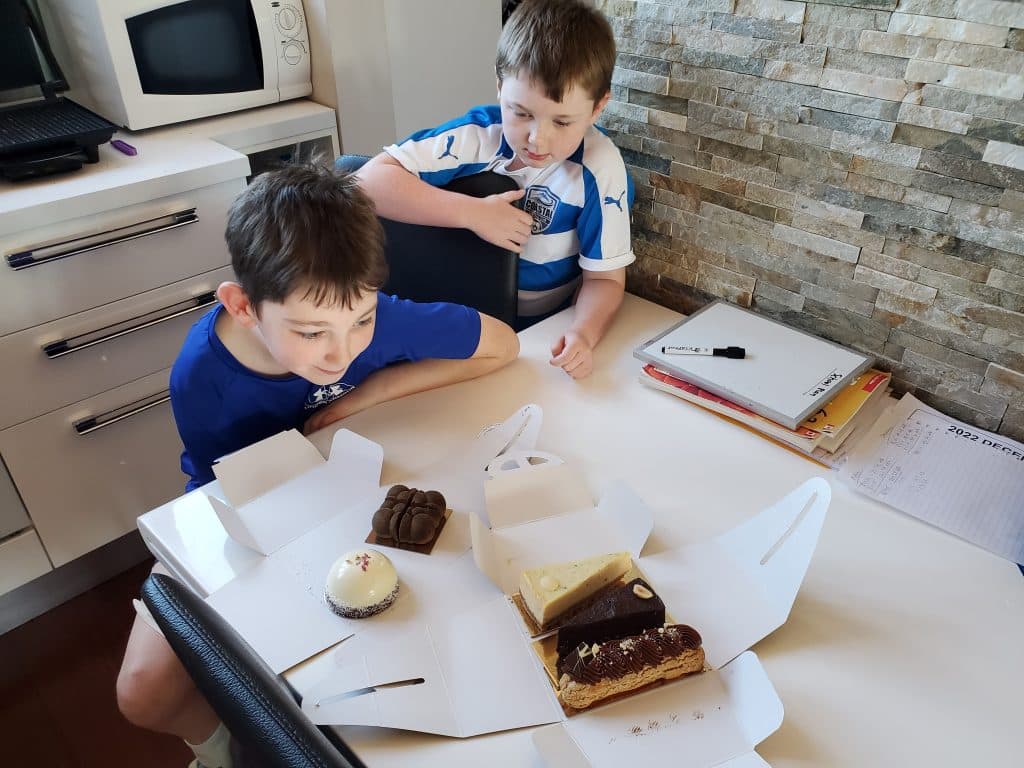
Many kids will be fascinated by new places and different cultures, but it can be overwhelming at times, and for many, the struggle to find foods their kids will enjoy can be a challenge. Creating a sense of familiarity can help with this.
•Pack Comfort Food: In the first month, having some creature comforts from home is nice. Pack a few of their favourites like granola bars and peanut butter as a surprise treat.
•Try Exotic Fruits: Even the pickiest eaters often enjoy new fruit. Hit up a local market and see what you can find.
•Find a Bakery: Kids love treats, so find a local bakery and indulge in some sweet and savoury delights.
•Look for Large Grocery Stores: I would encourage you to shop at markets because you can try local foods and because they are significantly cheaper than grocery stores. However, in those first few months, we stopped at American-style grocery stores in large cities to pick up a favourite box of cereal.
Month in Review
Our biggest Challenge
Our first month away was plagued with serious illness for our youngest. On our second night in Morocco, he experienced one of the worst cases of food poisoning I have ever seen. We were fortunate that our Airbnb host was a doctor and assisted us with a prescription for antibiotics and checked on him daily until he was better. Then, less than two weeks later, he contracted COVID and experienced extremely high fevers for several days. We quarantined, and he recovered quickly.
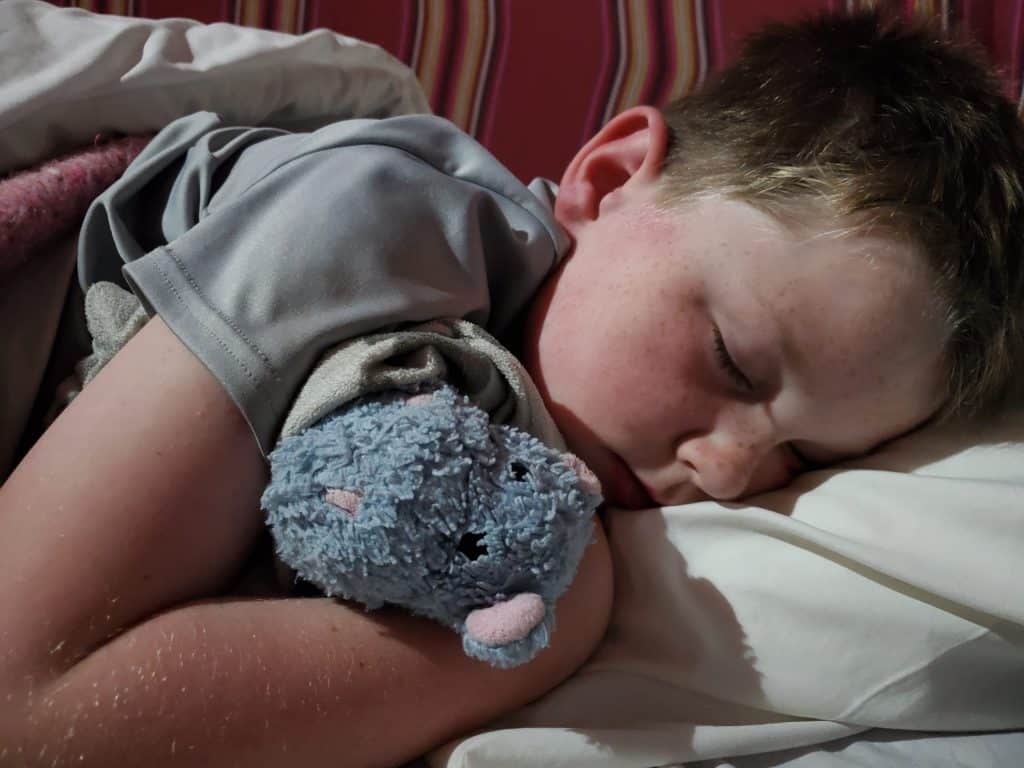
When you’re sick, all you want is home. And as a parent, when your child is ill, all you want to do is make it better. Having to cope with illness abroad created unforeseen stress and complicated our transition to life on the road.
Tip: We could find medications easily while away, even in smaller cities, but it’s nice not to search for a store in the middle of the night. Be sure to pack a basic medical and first aid kit to bring with you.
Our Best Experience
Our camel trek through the Sahara Desert was our best experience in our first month. Our tour started in Merzouga and included three days of trekking through the desert, luxury camping with delicious traditional food, and sandboarding down giant dunes. We all fell in love with the gentle camels, our boys getting up at sunrise to help care for them.
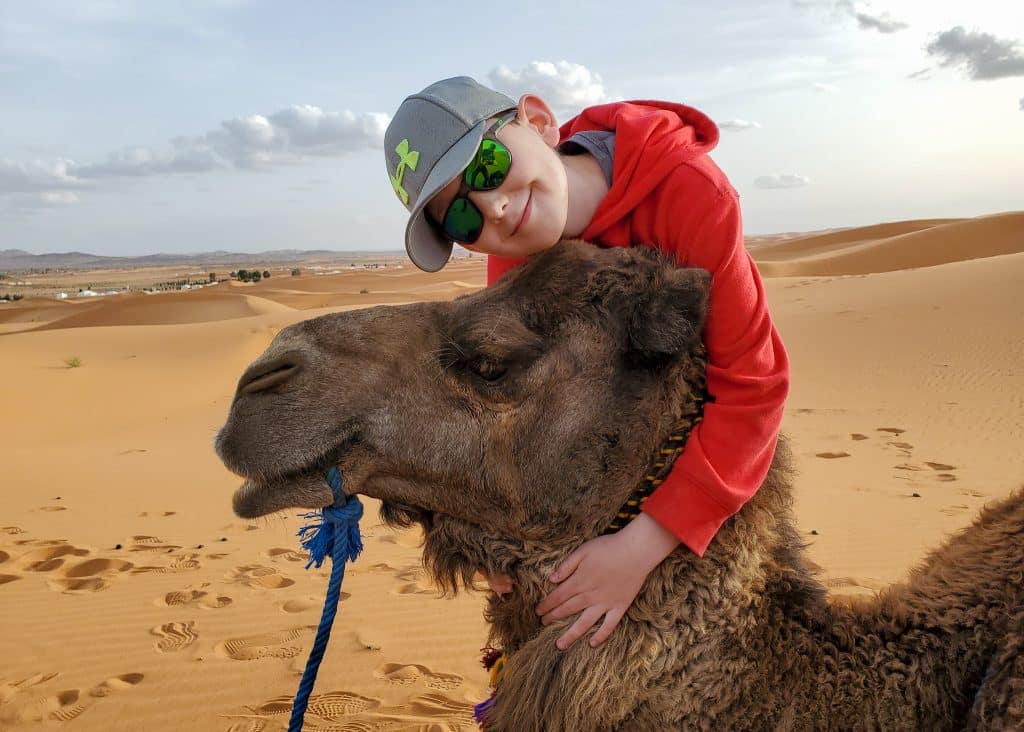
Ready to Get Started?
Check out these related posts to help plan your World Trip:
• Building a World Trip Itinerary
• How much does a World Trip cost?
• This or That? Saving to Make it Happen

